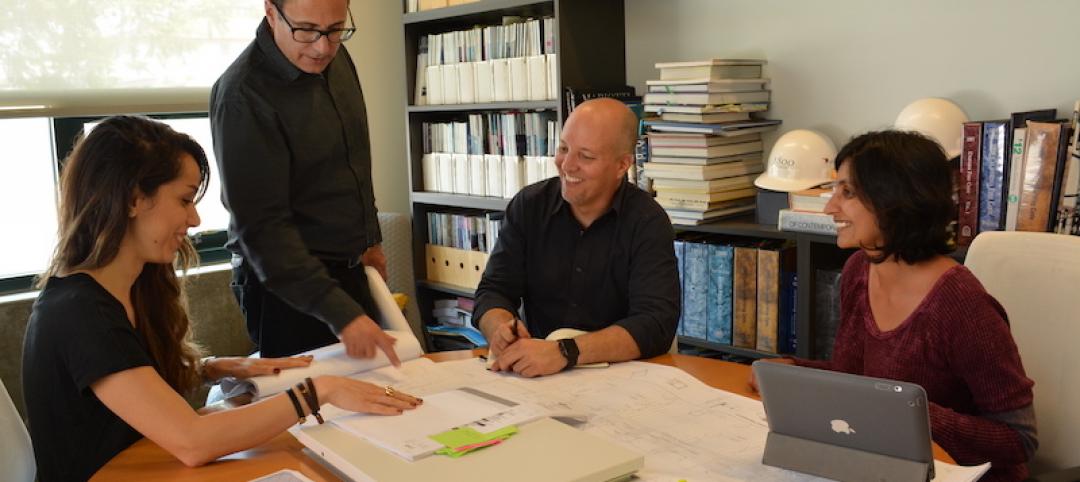|
In 2010, the AIA/NCARB Internship and Career Survey of emerging professionals took a snapshot of young designers during a time ofintense economic contraction, when they were often the first to suffer. But in the two years since, emerging professionals have begun experiencing a rebound, with higher employment levels, more young designers getting licensed, and any remaining unemployment becoming, in most cases, mercifully short. The 2012 Internship and Career Survey, commissioned jointly by the AIA and NCARB, and conducted by The Rickinson Group, contains a wealth of information on the experiences of emerging professionals as they go through IDP, take the ARE, become licensed, and obtain their first jobs. This survey has been completed five times since 2003, most recently inthe fourth quarter of 2012. Path to licensure: IDP and ARE The survey found that there has been little change in the length of time required to complete IDP over the last five years, with nearly two-thirds of respondents (62 percent) in 2012 reporting that it took them three to five years to complete. In addition, the majority of interns who have not yet completed IDP anticipate that it will take the same amount of time (55 percent). Twenty percent of those who haven’t yet started IDP think it will take them less than three years to complete; in contrast, only 13 of those who have already completed IDP reported that it took less than three years to complete. And just over half of respondents said that they were able to complete all 17 NCARB experience-area requirements at one firm, up 4 percentage points from 2010 and up 8 percentage points from 2005. Nearly 60 percent of survey respondents indicated that they have taken at least some divisions of the ARE, with the most commonly cited motivations for taking the exam being career enhancement (83 percent), personal goal fulfillment (80 percent), competitive advantage in the down economy (63 percent), and a slim majority citing competitive advantage in their firm. Forty percent of interns currently taking the ARE are taking it concurrently with IDP, an increase of 3 percentage points from 2010. In addition, female and younger interns are also more likely to be taking the two concurrently, as are interns on a traditional career path. Just over two-thirds of interns anticipate that it will take them one to four years to complete the ARE, comparable to the share of respondents who reported that it did indeed take that long. For the 41 percent of respondents who have not yet started or do not plan to ever take the ARE, the most commonly cited reasons for not doing so were a lack of time to prepare (56 percent) and cost (54 percent). Seven in 10 survey respondents reported that they intend to become licensed. This is down substantially from 2010, when 83 percent indicated that they planned to obtain licensure, because a larger share of interns are already licensed. (Twenty-five percent of interns were licensed in 2012, as compared to only 11 percent in 2010). The share of respondents who say that they do not intend to become licensed is unchanged from previous editions of the survey, at just 5 percent. Employment levels rising As in past versions of the survey, the vast majority of respondents in 2012 reported that they have already sought their first professional architecture position. And more than three quarters of respondents (78 percent) reported that they were currently engaged in professional architecture work, a notable 8 percent increase from 2010. In addition, just 6 percent reported that they were not currently employed, in contrast to 17 percent two years ago. Respondents also rated the many factors that went into selection of their place of employment, with the top three consisting of opportunities for growth (rated as important by 76 percent of respondents), location, and level of responsibility. Personal/family considerations were more important to respondents who were over 30, while location and reputation of the firm were more important to recently licensed architects. For respondents not currently working in a professional architecture position, the top two reasons were that they were laid off from their previous job (36 percent) and that the path to licensure is too long/difficult (35 percent). While just over half of respondents indicated that they have been laid off in the past, the duration of unemployment after the layoff has declined dramatically in the last two years. In 2010, only 52 percent were able to find a new job in a year or less; last year 64 percent reported that unemployment lasted 12 months or less. Just 14 percent said that they still haven’t found another job, less than half of the rate from two years ago. In addition, nearly seven in 10 respondents who left positions due to layoffs or other economic concerns think they are likely to remain in the architecture profession. Many firms offer interns support as they work to complete the ARE. The most common services include a firm-maintained library of study materials, firm payment of ARE fees, and paid time off to take the ARE. Approximately one-third of firms offer at least one of each. The vast majority of interns think that paid ARE fees are important forms of monetary support their firm can provide, along with a raise upon licensure, and paid professional organization dues. Overall, the most effective incentives to becoming registered are a salary increase, a bonus upon registration, and a bonus upon completion of the ARE. While 60 percent of respondents rated compensation as worse than they had anticipated, the majority has found that professional satisfaction with work, the type of work they’re doing, and hours worked are the same as or better than they had expected. This survey received 10,003 usable responses; 41 percent of respondents were women, 37 percent under age 30, and an additional 29 percent between ages 30–34. |
||
(http://www.aia.org/practicing/AIAB098254?mid=1298826&rid=14899235&cid=ITTestCampaign&sid=LyrisListManager&lid=aiarchitect-nonmembers)
Related Stories
Architects | Mar 15, 2021
A life in architecture – Lessons from my father
A veteran designer looks back on the lessons his father, a contractor, taught him.
Architects | Mar 11, 2021
Calling all building design professionals: BD+C needs your expertise on design innovation in 2021
This new BD+C research project explores the leading drivers, sources of inspiration, and successful outcomes for design innovation projects and initiatives.
Coronavirus | Mar 11, 2021
The Weekly show, March 11, 2021: 5 building products for COVID-related conditions, and AI for MEP design
This week on The Weekly show, BD+C editors speak with AEC industry leaders about building products and systems that support COVID-related conditions, and an AI tool that automates the design of MEP systems.
Laboratories | Mar 10, 2021
8 tips for converting office space to life sciences labs
Creating a successful life sciences facility within the shell of a former office building can be much like that old “square peg round hole” paradigm. Two experts offer important advice.
AEC Tech | Mar 4, 2021
The Weekly show, March 4, 2021: Bringing AI to the masses, and Central Station Memphis hotel
This week on The Weekly show, BD+C editors speak with AEC industry leaders about the award-winning Central Station Memphis hotel reconstruction project, and how Autodesk aims to bring generative design and AI tools to the AEC masses.
Architects | Mar 1, 2021
OMA designs 7-mile-long underwater sculpture park
The project will be completed in several phases.
Architects | Mar 1, 2021
AIA elevates 102 members to the College of Fellows
AIA fellowship recognizes significant contributions to the profession of architecture and society.
Market Data | Feb 24, 2021
2021 won’t be a growth year for construction spending, says latest JLL forecast
Predicts second-half improvement toward normalization next year.
Events Facilities | Feb 22, 2021
Weiss/Manfredi designs $250 million expansion for Longwood Gardens
The project will transform 17 acres of the core conservatory area.
Healthcare Facilities | Feb 18, 2021
The Weekly show, Feb 18, 2021: What patients want from healthcare facilities, and Post-COVID retail trends
This week on The Weekly show, BD+C editors speak with AEC industry leaders from JLL and Landini Associates about what patients want from healthcare facilities, based on JLL's recent survey of 4,015 patients, and making online sales work for a retail sector recovery.



















